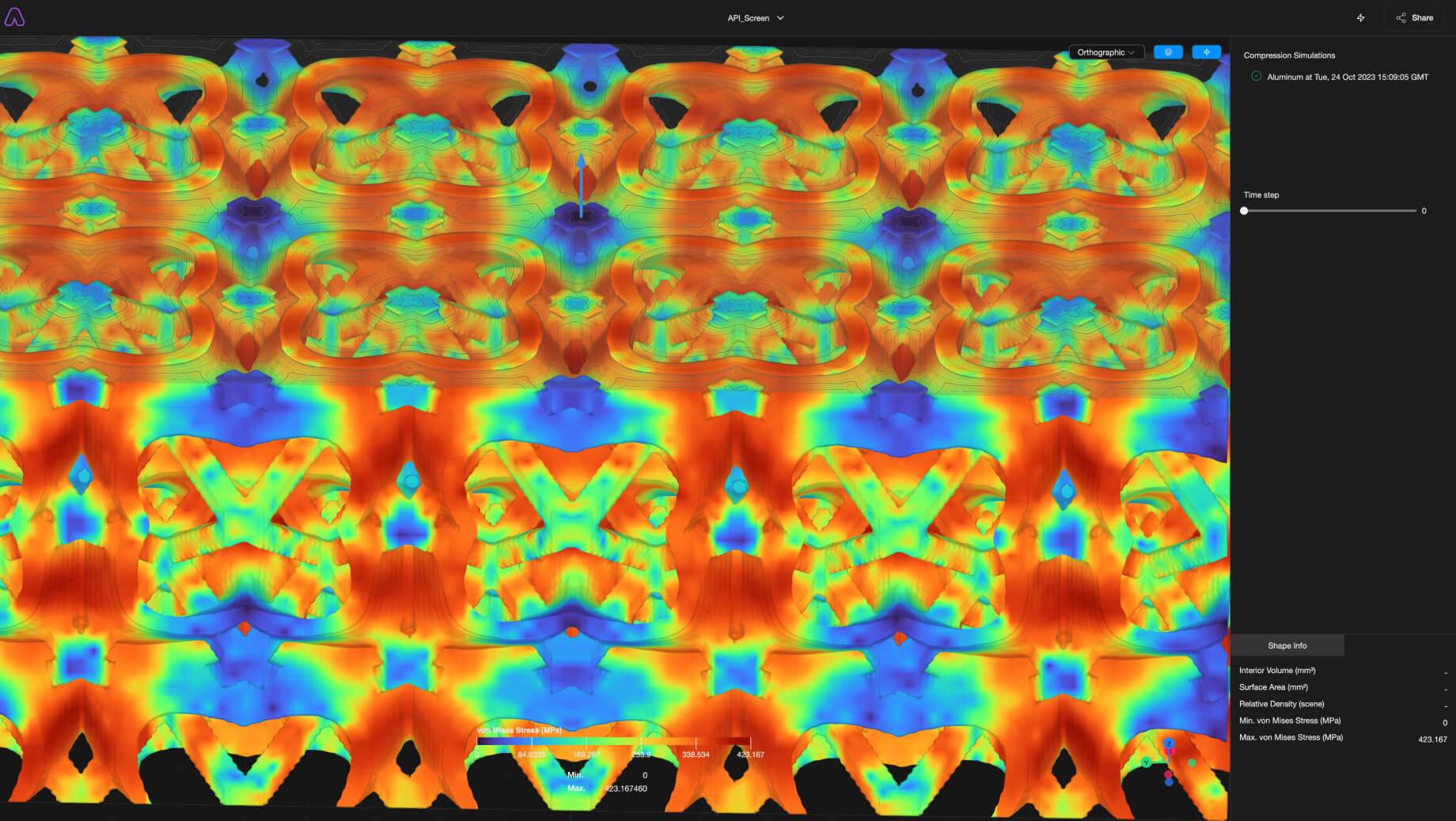Additive manufacturing of helmet padding has emerged as a revolutionary method in recent years, capturing the interest of scholars and startups alike. The approach presents an exciting opportunity to customize helmet padding to precisely fit each customer, effectively eliminating any gaps between the head and the helmet. What's more, the use of lattice structure padding enables designers to tailor specific mechanical properties to different areas of the helmet that are more vulnerable to impact. This technology not only enhances protection but also ensures a comfortable and breathable fit for users, pushing the boundaries of innovation in helmet production.
Extracting Helmet Padding Volume
To create custom-made helmet paddings, the process starts with a detailed scan of the customer's head shape. This scan is used to create a personalized volume that fills the space between the head and the helmet shell as illustrated in Figure 1. This volume is then divided into specific areas that require padding and void spaces. To achieve the desired performance, lattice structures are employed to fill the volume with materials. These lattice structures serve a dual purpose: reducing the overall volume and mass of the padding while also enhancing its mechanical properties. By using lattice structures, helmet designers can optimize the balance between weight, comfort, and protection, resulting in a high-performance and customized helmet padding.

Lattice infill of Helmet Padding
The selection of the lattice structure for helmet padding is critical, not only in terms of its geometric configuration but also with respect to its relative density, orientation to withstand force, and energy absorption capabilities. Figure 2 illustrates some potential examples of lattice types that can be used for helmet padding.

When designing the lattice structure, careful attention needs to be given to avoid the creation of sharp edges or flying struts in the corners and faces of the helmet pads. A conformal lattice approach is one solution for avoiding such issues. This helps avoiding stress concentration points and improves the mechanical performance.

Another method of improving the mechanical performance of helmet paddings is through the functional grading of lattice porosities in various parts or by mixing and matching between different lattice structures. These techniques could help to enhance the overall effectiveness of the helmet padding, providing an added level of protection against the most common types of head injuries.

Experimental Testing of Helmets
For a new helmet design to be sold in the market, it must pass a certain number of tests and validation. Effective helmet design plays a crucial role in preventing brain and head injuries. To ensure the safety and reliability of helmets, various testing procedures are conducted. One of the primary tests conducted is the impact test, where helmets are subjected to the impact of a heavy object dropped from different heights and angles. This test evaluates the helmet's ability to absorb and distribute the force of an impact effectively. Another test is the retention test, which assesses the functionality and strength of the helmet's chin strap, ensuring proper helmet retention during an accident or collision. Additionally, the penetration test evaluates the helmet's resilience against sharp objects.
Different types of helmets adhere to specific standards. For instance, bicycle helmets in the United States must meet the Consumer Product Safety Commission (CPSC) standard. Motorcycle helmets must be certified by the Department of Transportation (DOT) in the United States or the Ministry of Transportation (MTO) in Canada. Additionally, there are voluntary certifications like ECE, SNELL, and FIM available. In Europe, the ECE standards apply to motorcycle helmets, like the DOT standard but with additional considerations for real-life environmental factors. Workplace helmets are governed by the Occupational Safety and Health Administration (OSHA) standards.
Numerical Characterization of Helmets
Simulation plays a crucial role in modern helmet design, allowing designers to save time and resources by understanding the approximate behavior of their designs before physical prototypes are created. By simulating the behavior of the lattice structure, designers can gain insights into its quasi-static behavior, including deformation under specific loading conditions and energy absorption capabilities. This helps in optimizing the lattice structure for optimal performance. For example in Figure 5, two lattice structures having the same relative density were compared. The area under curve of Kelvin unit cell is higher than that of BCC structures . Moreover, the densification occurs latter and the plateau stress is higher making it a better candidate for energy absorption applications.

Furthermore, simulation can also assist in impact testing of lattice structures, enabling designers to study how the properties of the structure change at different strain rates. This information is valuable in understanding how the lattice will behave in real-world scenarios where high-speed impacts occur.

How can Simulations help?
Simulation plays a crucial role in addressing the challenges faced in the development of 3D printed helmet padding. These challenges include high costs and a lack of sufficient research comparing additive manufacturing (AM) materials to traditional foams. By incorporating simulation at every stage of the helmet development process, these obstacles can be overcome. Weather its quasi-static compression or impacts simulations, designers can save costs by eliminating designs with poor performance, reducing time to market, minimizing waste, and enhancing overall product quality. However, simulating lattice structures can be challenging, often requiring days for data pre-processing and relying on powerful workstations for long runtimes.
Metafold provides users with a convenient online one-click button to perform meshless quasi-static compression tests. These tests are particularly valuable for conducting initial product development studies, such as evaluating the effectiveness of helmet padding inserts. Additionally, through the API, Metafold users can access additional control of solver parameters and run high resolution simulations, generate stress strain diagrams and run impact tests on candidate lattice structures for helmet application or other high-impact settings.



